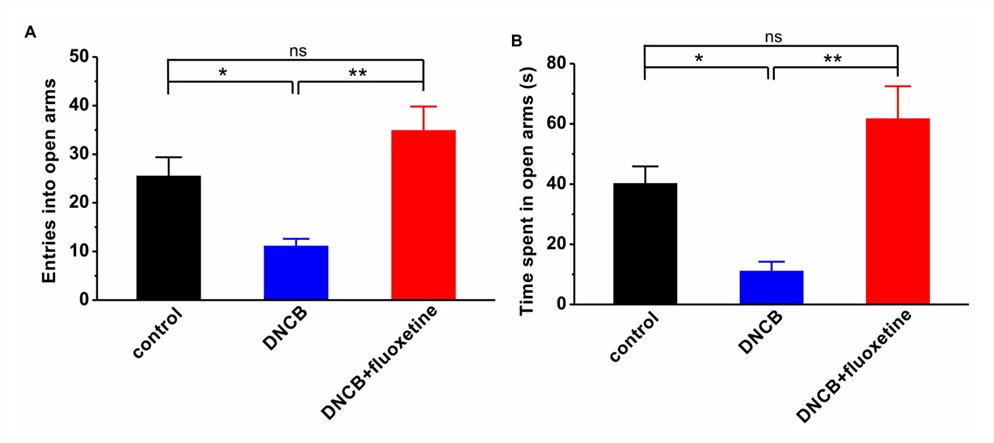Many behavioral tests have been developed for assessing the anxiety-like behavior of rodents. Creative Biolabs is capable of conducting the elevated plus maze test to assess the anti-anxiety effects of pharmacological agents and steroid hormones and for the phenotyping of transgenic and knockout mice.
Introduction of Elevated Plus Maze (EPM) Test
EPM is one of the most popular behavioral tests for research on anxiety, initially developed for rats and more recently for other species such as mice, guinea pigs. The test apparatus is raised above the floor and comprises two closed (dark, with walls) and two open arms (illuminated, without walls) that are arranged to form a plus shape. The test is based on the rodents' natural aversion to the open and elevated areas, which is reported to be caused by fear of open and elevated spaces.
On the test day, rats or mice are placed at the junction of the four arms of the maze, facing an open arm. They prefer to stay in the closed arms than the open arms. The number of entries into the open arms and the time spent in each arm are recorded by a video-tracking system as the index of anxiety. This test is sensitive to both anxiolytics as well as anxiogenics and has been validated for both rats and mice. Clinically effective anxiolytic drugs specifically increase, and anxiogenic drugs specifically decrease, the number of entries into the open arms and the time spent there. Other ethological measures that can be observed in rodents in the maze are the number of rears, head dips, fecal boli, freezing or stretched-attend postures.
Features of EPM Test
-
Other behavioral assays for the assessment of anxiety-like behavior usually rely on the application of noxious stimuli such as electric shock and food/water deprivation that typically produce a conditioned response. However, the EPM test relies on rodents' proclivity toward dark, enclosed spaces and an unconditioned fear of heights/open spaces.
-
It is also an easy and time-saving method for studying memory deficits in animals. Thus, it can help in the estimation of different drugs affecting the memory like sedative (e.g., diazepam), scopolamine, etc.
 Fig.1 Effects of chronic fluoxetine treatment on anxiety-like behaviors induced by DNCB treatment in the EPM test. (Li et al. 2016)1, 2
Fig.1 Effects of chronic fluoxetine treatment on anxiety-like behaviors induced by DNCB treatment in the EPM test. (Li et al. 2016)1, 2
Creative Biolabs also conducts other behavioral tests for the evaluation of anxiety-like behavior:
Creative Biolabs also provides behavioral tests of motor function, cognition, and social behavior and is constantly developing and validating new behavioral tests of rodents. Moreover, our test paradigms can be tailored to suit the practical research requirements of our clients.
A comprehensive list of rodent neurological disease models is placed below for your review:
Contact us for more information on how we can help you move your drug along the development pathway.
References
-
Li, Y.; et al. Fluoxetine ameliorates atopic dermatitis-like skin lesions in Balb/c mice through reducing psychological stress and Inflammatory Response[J]. Frontiers in Pharmacology. 2016, 7(12667).
-
under Open Access license CC BY 4.0, without modification.
For Research Use Only.


 Fig.1 Effects of chronic fluoxetine treatment on anxiety-like behaviors induced by DNCB treatment in the EPM test. (Li et al. 2016)1, 2
Fig.1 Effects of chronic fluoxetine treatment on anxiety-like behaviors induced by DNCB treatment in the EPM test. (Li et al. 2016)1, 2


